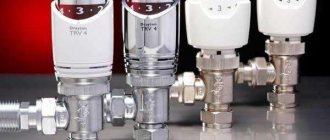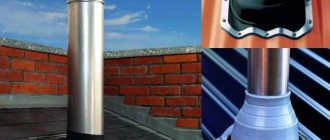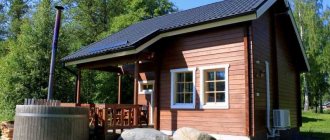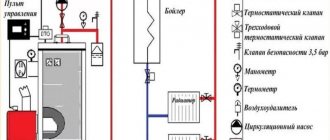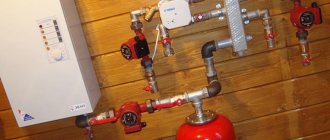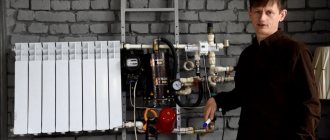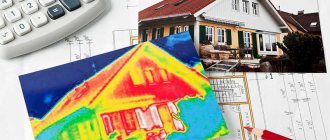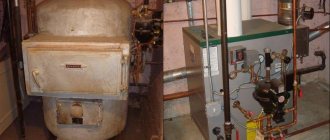You purchased a new heating unit, intending to install it yourself and connect it to the heating network of a private home. Installation and piping of the boiler is carried out in various ways, depending on the energy carrier used, the type of piping and the availability of additional equipment:
- buffer capacity;
- indirect heating boiler;
- second heat generator.
To help you correctly connect the boiler to the heating system with your own hands, we suggest considering the existing connection options, then choosing the appropriate scheme.
What is boiler piping with polypropylene
Piping is the connection into a single functional complex of heating equipment, equipment systems and hot water supply, ensuring the transfer of hot water to heating devices and water points. A well-executed scheme allows you to evenly distribute heat flows to consumers and ensure reliable operation of all equipment, protecting it from overheating and the possibility of creating an emergency. Before installing heating and pumping equipment, they are calculated; only in this case will the circuit work correctly and efficiently, with operating parameters and efficiency.
You need to understand that there are no ready-made standard options for heating networks; only an individual project can be effective. However, to perform it, a certain standard set of standard equipment is used. A huge advantage of using polypropylene pipelines (PPR) is the unlimited possibilities for creating contours of any complexity. Although specialists should not abuse this, since the complexity complicates installation work and, ultimately, reduces the efficiency of the thermal power plant.
Gas boiler piping
To tie the boiler with polypropylene, you can use both welding technology and the use of fittings. The second option is less popular, since even with small “water hammer” at the installation points, leaks can occur. And although PPR can easily withstand heating fluids from temperatures up to 95 C, there are temperature restrictions that are taken into account when tying the boiler.
The connection of gas fuel to the boiler unit is rigid; SNIiP requires the use of only steel pipelines using a paronite gasket through a steel pipe or “American”.
The pipeline section at the inlet/outlet of the boiler unit up to 1 m is made of steel.
Pipe PN 10
Features of installation of PPR pipelines
When piping a boiler, polypropylene pipes and fittings are connected mainly by cold or hot welding; when connecting to metal pipelines, threaded connections are used. Screwing on is much more convenient, but because of them, assembling the system will cost significantly more.
True, if you want to connect a polypropylene pipeline to a metal counterpart, you cannot do without threaded fittings.
An extensive line of fittings is produced to form linear and nodal connections of polypropylene pipes
“Hot” welding is done with a special apparatus (soldering iron, “iron”). The pipes are heated using a suitable nozzle to a melting temperature of 260 degrees, and then the parts with softened edges are pressed against each other. The result is a reliable and monolithic connection.
Before welding, the foil of reinforced pipes must be cleaned. Otherwise, it will interfere with the connection of polymer products, making the seam fragile. With fiberglass, these unnecessary steps will not be required. It melts easily along with the plastic.
PPR soldering technology is extremely simple, all work can be done with your own hands (+)
Cold welding involves the use of a specialized adhesive composition. In recent years, this method has rarely been used, because the result is not reliable enough.
In heating systems, threaded connections should be sealed with paronite or high-temperature sealant. Do not forget about the fairly high operating temperature of the coolant.
There is one more nuance of using polypropylene for piping a heating boiler. Antifreeze and plastic are a pretty bad combination. It is recommended to use water as a coolant for a system of plastic pipes.
Types and characteristics of pipe products for heating systems
Polypropylene pipelines are divided into 4 categories:
- PN 10 - pipes with a thin wall, for low pressure media of no more than 1 atm and T up to 45 C, are practically not used in boiler heating systems, except in sewer low-temperature gravity lines or low-temperature “warm floor” designs.
- PN 16 is a slightly better quality, T up to 60C, and pressure -1.6 atm, but still the material is not suitable for a boiler unit with a medium output of up to 95C.
- PN 20 - has technical characteristics T up to 80 C, and a medium pressure up to 20 atm, can be used in hot water supply schemes or low-temperature heating of small one-story buildings.
- PN 25 - with an ambient temperature of up to 95 C and a pressure of up to 25 atm are acceptable for use in almost any heating system, except for those operating on steam and condensate.
In addition to marking, it is necessary to take into account the coefficient of thermal expansion of pipes, since pipes elongate very much when heated, without taking these properties into account, the new installed system will be deformed upon first start-up, with the formation of numerous leaks. The problem is solved in two ways - by installing compensation loops that reduce elongation and the use of pipes with a reinforcing layer. This option is implemented in PN 25 pipes.
Pipes PN 25, glass fiber reinforced
The foil layer does not come into contact with water, and therefore is not affected by corrosion processes, while reducing the coefficient of thermal expansion by almost half.
There is an even more effective option, PN 25, although it is a little more expensive, with a fiberglass reinforcing layer that reduces all thermal expansion to almost nothing.
Using the built-in boiler pump
This scheme involves the use of boiler equipment with a built-in pump, the power of which is up to 35 kW. It creates a pressure at the outlet of the tank in the range of 20 - 25 kPa, with a water flow of 1000 - 1500 liters per hour.
The installation process is similar to that of a conventional heating element, but an additional pump for underfloor heating is not required.
To fully utilize the potential of the device and create coolant circulation in the heated floor and radiators, it is necessary to correctly connect the device to the circuits.
This can be achieved in this scheme by ring combination - the boiler with the TP, and with the radiator. These two rings are united by a small common area with low hydraulic resistance, thereby one circuit does not affect the other.
In this scheme, the slant filter acts as a slag catcher, and there are air vents in the boiler, radiator and floor circuit.
The essence of the functioning of the ring circuit is that water flows from the container where it is heated into the pipelines. Pressure surges in the supply and return pipes lead to the movement of liquid through the lines and its return back.
Options for piping boiler equipment
The source of all heat supply systems is the boiler. It heats the supply coolant usually to T 95 C in the heating system and to T 65 C in the hot water supply, using gaseous, liquid or solid fuel for combustion. The boiler is a dangerous piece of equipment, especially when operating on gas fuel. Its efficient and safe operation can only be ensured by proper harnessing. Particular attention is paid to solid-state heat supply sources that do not have automation systems. Their correct piping will not only create a boiler safety system, but will also allow achieving efficiency at the level of a modern gas unit. Tying a heating boiler with polypropylene, project diagrams, depend on the design of the boiler and the type of network.
With forced circulation
This option for moving water along the boiler circuit is more preferable, especially for heating multi-level buildings of a huge area, where it is necessary to overcome large hydraulic resistance in the network. This is a more modern heating supply scheme, since it allows you to fully automate the heating process, including achieving different temperature conditions in the room.
The only drawback of this type of heating is its energy dependence on the electrical network, without which pumps, smoke exhausters and the control unit will not be able to function. In the traditional version of the harness, balancing of auxiliary equipment, safety automation and regulation is performed. Polypropylene piping of a double-circuit boiler is carried out separately for the heating and hot water circuits.
There are simplified installation schemes using the primary-secondary ring method, which reduces the number of devices, but each ring will need to be equipped with an autonomous pump. A floor-standing double-circuit boiler operating on a system of several rings with a power of up to 50.0 kW is equipped with collectors, called combs, which ensure a uniform supply of heat flows.
With natural circulation
Gravity boilers are considered the simplest to make the piping yourself. A characteristic feature is the absence of a pump that ensures the movement of the medium through the heating circuit. The movement of the medium to the heating devices and its return to the boiler unit for a repeated heating cycle is accomplished thanks to the physical laws of movement of media of different temperatures. A similar piping scheme is well applicable for heating small garden houses; it can be done by almost anyone who can hold a tool in their hands.
To do this you will need:
- Boiler;
- radiators made of cast iron, steel, bimetallic or aluminum;
- hydraulic expansion tank with membrane;
- PPR polypropylene pipes;
- bypass line made of PPR, to turn off heating appliances.
Advantages of piping gravity boilers:
- Quick, simple assembly of the heating circuit;
- small number of auxiliary devices and fittings;
- non-volatile operation of the circuit;
- budget price for equipment configuration and installation;
- the ability to carry out repairs yourself.
The disadvantages include the accuracy of calculating the diameter of the pipes and ensuring their slopes when it is necessary to connect the circuit with natural circulation. The diameters are large, which does not add design to the premises; in addition, the system is configured for maximum performance and is practically not adjustable. However, when the owner gets tired of all this, he can easily install an energy-efficient, small-sized pump into the circuit.
Electric and diesel heat generators
Connecting a diesel fuel boiler to the radiator system is identical to piping gas-using installations. Reason: a diesel unit operates on a similar principle - an electronically controlled burner heats the heat exchanger with a flame, maintaining the set coolant temperature.
Clarification. The recommendation does not apply to heaters equipped with a homemade burner device that burns diesel and waste oil, for example, a Babington flare burner. An individual approach is needed here.
Electric boilers, in which the water is heated by heating elements, an induction core, or through the electrolysis of salts, are also connected directly to the heating. Automation located in an electrical cabinet connected to the network according to the electrical diagram provided is responsible for maintaining temperature and safety. Other connection options are shown in a separate publication on the installation of electric heating boilers.
Wall-mounted mini-boiler rooms equipped with tubular heaters are intended only for closed heating systems. To work with gravity wiring, you will need an electrode or induction unit, which is tied according to the standard scheme:
If you look at it, there is no need for a bypass here - the boiler will not work without electricity either
Criteria for choosing a wiring diagram
They will depend on the type of fuel burned, the total heating area of the object and the state of its thermal insulation, the boiler model and its location.
Basically, one-, two-pipe or manifold installation schemes are used. And if the first two are used for units with natural and forced circulation, then the latter method is workable exclusively in a pump circuit for transporting coolant.
The single-pipe version connects one looped line and the sequential inclusion of heating devices in it. In a two-pipe system, there are 2 independent supply/return pipes from the boiler unit, to which heating devices are connected at the supply level.
With collector piping, one or several collectors are installed, and an independent pipe is laid to each heating device. It also allows you to turn on a “warm floor” made of polypropylene pipelines.
Despite the fact that the collector scheme leads to a decent increase in the cost of the project, but in terms of regulating the heat supply process, it is the most advanced. Modern heating circuits in EU countries operate exclusively using this option. Despite the fact that more complex calculations will be required at the design stage, and the assembly uses a larger volume of PPR pipes, nevertheless, the created system will allow for fine-tuning on a room-by-room basis.
The criteria for choosing an option will depend on the design of the boiler unit:
- Most manufacturing plants require the first meter of pipe to be made of steel, especially for solid fuel boilers.
- Installation of polypropylene pipes for a unit running on gas or stove fuel is carried out using a hydraulic arrow and a manifold.
- Often gas boilers have pumps built into the design of the device.
Piping diagram for a double-circuit gas boiler
Pumping and mixing unit
It is possible to construct a heating system according to a combined scheme in a private house using a pumping and mixing unit. The design with it is the most effective, but will be more expensive compared to using a 3-way valve, although the operating principle is the same.
Cooled water from the return pipe dilutes the hot coolant, and the presence of balancing taps allows this to be done in the required proportions.
This unit comes in different configurations. It depends on the purpose and cost of the equipment. The standard device includes:
- thermostatic valve;
- immersion temperature sensor;
- balancing valve with fixing spring valve;
- circulation pump;
- immersion thermometer;
- threaded sleeve;
- bypass and shut-off valve;
- drain and ball valve;
- air vent;
- bypass bypass.
Nuances and piping options for different types of boilers
General recommendations from experienced professionals:
- The installation scheme is selected individually.
- The boiler is installed in accordance with SNIiP rules below the level of heating devices.
- Before lining with polypropylene, the floor-standing boiler is installed on a metal or concrete base.
- Forced ventilation and emergency lighting systems are recommended for all unit options.
- A coaxial chimney is included in the piping of a device operating on gas fuel, which is sealed at all joints during installation.
- After completing the piping of the boiler unit and chimney, proceed to installing a safety system in the following order: medium pressure devices (pressure gauges), protective devices and then an automatic air vent.
- The manifold circuit is made of a 1.25-inch PPR pipeline; protective devices, a circulation pump, a hydraulic arrow and an air vent are installed according to the movement of the medium.
- To supply the heating coolant to the heating devices, 3 branches of a 1.0-inch PPR pipe are removed from the comb, and the rest are closed with plugs.
- Connect heating and return devices.
- In a combined heating system, the underfloor heating circuit is equipped with an independent pump, while the expansion tank is installed between the hydraulic valve and the boiler unit.
- The piping of the boiler unit is completed by installing a drain valve; it is also used to fill the circuit, but it is better if these are two independent valves. The installation point depends on the chosen system, but there are general conditions - the drain valve is installed at the lowest point, which is especially important if you plan to mothball the system in winter so that there is no water left in it.
Gas equipment
The piping of such equipment with polypropylene pipes is carried out with an independent circuit and a circuit pump that creates operating pressure in a small section of the network from the source to the distributor.
It is allowed to tie a gas unit with such pipes without steel pipes, since the heating temperature at the supply does not exceed 80 C.
In a gas-powered unit with a cast-iron boiler, a heat accumulator is installed, which helps balance the hydraulic regime and prevents sudden temperature changes that affect fragile cast-iron heating surfaces. When piping 2-circuit boilers, it is additionally necessary to place fine and coarse water filters.
Electric heater
Tying an electric boiler with polypropylene is quite acceptable. The boiler has the highest rating for a protective system that prevents the water in the unit from boiling, with subsequent formation of steam and pipe rupture. The heating process stops when the power supply to the electric heating elements is turned off.
In addition, the system has built-in hydraulic accumulators and devices for relieving excess pressure of the environment, which can form during a sudden power outage and stopping the pump for pumping hot water to heating devices and water collection points.
Solid fuel boiler piping
Solid fuel models
This is the most problematic unit for piping plastic pipes. For it, the installation of a protective meter pipe at the inlet/outlet of the medium is mandatory in order to protect them from overheating. For systems with pump circulation, an additional backup power supply device will be required to continue cooling the boiler in the event of an emergency shutdown of the main source of electricity. In addition, a small gravity circuit is made with a small number of connected batteries to cool the boiler heating surfaces until all the fuel burns out.
According to the requirements of fire safety rules, the solid fuel boiler is covered with a protective casing, which significantly reduces heat loss from the walls of the combustion chamber to the boiler room and, consequently, the negative impact on PPR pipes
A small reminder for the installation of plastic pipes - the quality will be determined not only by the installation work, but also by the selected range of pipes. You should purchase all main and auxiliary boiler room equipment only certified from reputable suppliers. Polymer pipes do not require insulation work or painting, scale and corrosion do not form on them, and they are characterized by high noise insulation. The cost of the material is lower, and the pipes are lighter than those made of metal, so installation can be done by yourself.
Briefly about the main thing
Which scheme to choose for piping an autonomous heating boiler depends on its type and installation method. A minimum of additional equipment will need to be installed when installing a gravity system - only an expansion tank and taps that cut off the boiler from it. With automatic continuous boilers it will be a little more complicated: for their stable operation, you will need to install a circulation pump, a safety group and a membrane expansion tank. You can connect a heated floor or a hot water boiler to the system using collectors.
Ratings 0

